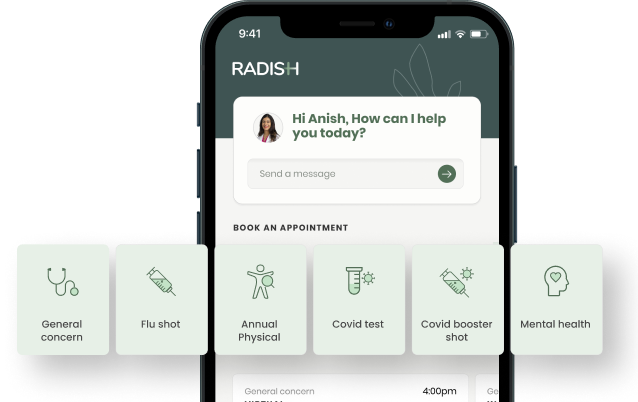COVID-19 Pills Now Widely Available

Dr. Jason Sellers
With case counts rising right now in the New York area and across the country, COVID-19 continues to make its presence known. Fortunately, Pfizer’s newly approved Paxlovid has been shown to be effective against COVID-19.

Both the National Institute of Health (NIH) and the World Health Organization (WHO) advise that most people with mild to moderate cases of COVID-19 should consult their doctor for a prescription. Let’s learn more about this medication and how it can help!
What is Paxlovid?
Paxlovid is a combination of two antiviral medications, one called nirmaltrelvir and the other called ritonavir. Nirmaltrelvir blocks the COVID-19 virus from replicating in the body, and ritonavir helps the nirmaltrelvir work more efficiently by preventing its breakdown in the body. Ritonavir is actually a medication that has been around for many years and was used previously to treat HIV.
The big advantage of Paxlovid compared to past treatments for COVID-19 is that it is taken in pill form and can be obtained at your local pharmacy with a prescription. For those familiar with Tamiflu which treats the flu, you can think of Paxlovid as a similar medication to treat COVID-19. For most people it consists of taking three pills (two nirmaltrelvir and one ritonavir) two times per day for a total of five days.
It should be started within five days of symptom onset, which is why it is so important for anyone having cold symptoms to get tested for COVID-19 so they know their status as soon as possible. Also don’t forget that at-home rapid testing is often falsely negative on the first day or two of infection, so it is important to continue testing several days into your symptoms.
Who is Paxlovid for?
Paxlovid currently has been approved by the FDA for Emergency Use Authorization (EUA) to treat people age 12 and older weighing at least 88 pounds who have tested positive for COVID-19 and are at higher risk for progression to severe COVID-19 including risk for hospitalization and death.
Common risk factors for severe COVID-19 can be found here and include age over 50, being overweight with a BMI over 25, physical inactivity, mental health conditions such as depression, chronic kidney, liver, or lung disease, diabetes, heart disease, immunocompromised conditions, smoking, as well as other conditions. If you have questions about whether you are at high risk for severe COVID-19 and if you qualify for treatment you should see your doctor.
How effective is Paxlovid?
The initial study that led to the medication being approved showed a whopping 89% reduction in risk for hospitalization or death in patients at higher risk of developing severe disease. The data showed that about 7% of people who were not treated were hospitalized, while only about 0.9% of those treated had to go to the hospital. Furthermore, of the ten people who passed away during the study, none of them had received Paxlovid.
The medication has been shown to be extremely effective for those at high risk. Though the initial study was performed while the Delta variant was most predominant, early data indicate that it is effective against Omicron as well. And while studies have shown it helps prevent hospitalization and death, additional data is needed before we know just how much it decreases symptoms of COVID-19 or by how long it may lower the duration of positivity on COVID-19 home tests.
How safe is Paxlovid?
Paxlovid is generally well tolerated, however side effects can include a change in taste, diarrhea, muscle aches, and high blood pressure. It has also been shown to have many interactions with other medications, and of particular importance, it can interact with common cholesterol-lowering statin medications. This is why it is very important to tell your provider what medications and supplements you are taking before taking Paxlovid.
As the medication is cleared by the kidneys and can also affect the liver, you should tell your doctor if you have any history of decreased kidney function or liver disease. In the case of kidney disease, there is a special formulation of Paxlovid at a slightly decreased dose.
Similar to when the COVID-19 vaccines were initially released, Paxlovid is approved by the FDA under emergency use authorization but has not yet gained full FDA approval. This means that there may be other effects of the medication that are not yet known. You can find out more about the medication by going to the FDA fact sheet here. That said, the indication from current guidelines is such that it is believed that the overall positive benefit of the medication is likely to outweigh the risks and potential negative effects.
Where can I get Paxlovid?
Currently, Paxlovid is widely available across the United States, including in New York. It can be picked up at most pharmacy chains, however, you should speak with your doctor to confirm availability at your local pharmacy before going to pick it up.
Does this mean I don’t need a vaccine?
Vaccination and booster shots continue to remain the best way to prevent severe disease from COVID-19 and also to lower the risk of COVID-19 transmission in the community. The Pfizer and Moderna mRNA vaccines have gained full FDA approval and are currently recommended for everyone age 12 and older. There is also a recommendation to obtain one additional booster after 5 months for all recipients age 12 and older as well as the option for a second booster an additional 4 months later for people over the age of 50.
While the introduction of Paxlovid is a game-changer in the treatment of COVID-19, it is also important to continue wearing masks when appropriate and getting tested if you are experiencing any cold symptoms at all, no matter how mild, as they can be a sign of COVID-19. If you are having symptoms you should isolate yourself at home and speak with your doctor.
If you have any questions or are currently sick with COVID-19 symptoms, book an appointment with your Radish provider to discuss more and learn about the options available for treatment.
Request a Free Demo
Learn how Radish Health can help you improve employee health and save on healthcare.
Request a Demo